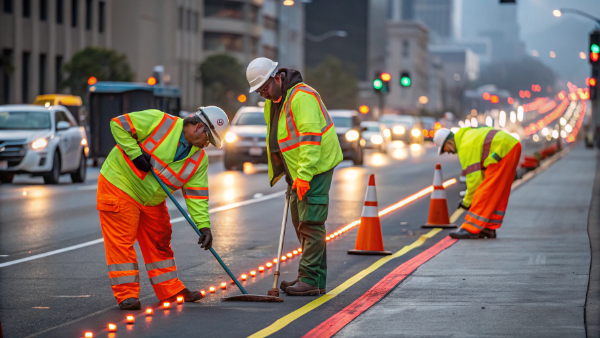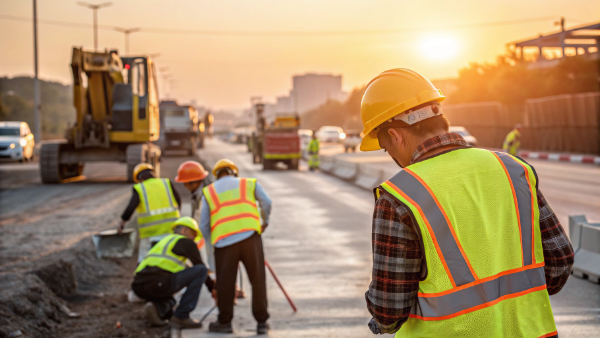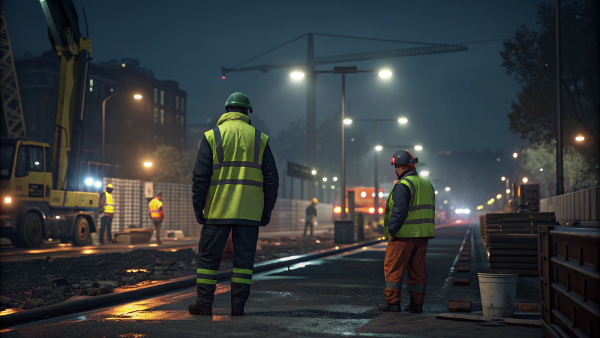Struggling to pick the right safety vest? Worried that the wrong choice could lead to accidents and compliance issues? You need gear that guarantees your team's visibility and safety.
To choose the correct ANSI/ISEA 107 class, you must evaluate your work environment. Consider traffic speed, proximity to vehicles, and lighting conditions to decide between Class 1 (low risk), Class 2 (moderate risk), or Class 3 (high risk) apparel for your team's specific job tasks.
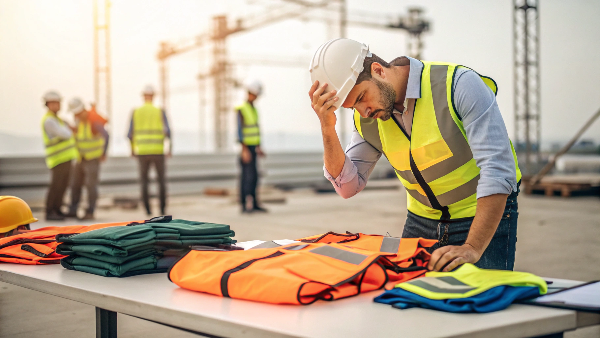
Choosing the right high-visibility gear is more than just picking a bright color. It is a critical decision that directly impacts worker safety and your company's liability. I have seen clients get overwhelmed by the different classes and types. But once you understand the logic behind the standards, making the right choice becomes much clearer. Let’s break it down together so you can equip your team with confidence and ensure they are seen and safe on the job.
What is the ANSI ISEA 107 standard?
Are you confused about what ANSI/ISEA 107 actually means? It’s a common question we get. You know you need to comply, but the technical name can be intimidating.
The ANSI/ISEA 107 standard is the American national standard for high-visibility safety apparel1. It specifies the requirements for clothing designed to make workers visible, including the amount of fluorescent background material and retroreflective tape2, its placement, and its performance to ensure safety in different environments.
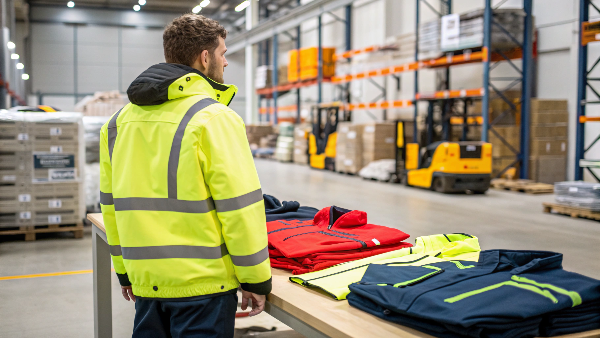
As a manufacturer, we live and breathe this standard every day. It's the foundation of everything we build. The standard isn't just a rulebook; it's a guide to saving lives. It was created by the American National Standards Institute (ANSI) and the International Safety Equipment Association (ISEA) to create a uniform system for worker visibility3. Before this, requirements were inconsistent. Now, we have a clear framework. The standard is broken down into performance classes4 and garment types. This helps you match the gear precisely to the job site's risks. We conduct over 75 tests in our lab to ensure every garment we ship not only meets but exceeds these strict requirements.
| Key Component | Purpose |
|---|---|
| Fluorescent Material | Enhances visibility during daylight hours. |
| Retroreflective Tape | Reflects light back to the source (like headlights) in low-light conditions. |
| Performance Classes | Defines the minimum amount of each material (Class 15, 2, 3). |
| Garment Types | Classifies use cases: Type O6, R, or P. |
What is the minimum ANSI 107 class?
Wondering if you can just get the most basic gear? It is tempting to choose the minimum to save costs, but this can be a risky decision for your team's safety.
Class 1 is the minimum ANSI 107 performance class. It is intended for workers in low-risk environments where traffic is slow (under 25 mph / 40 kph) and there is ample separation from vehicles, such as parking lot attendants or warehouse workers.
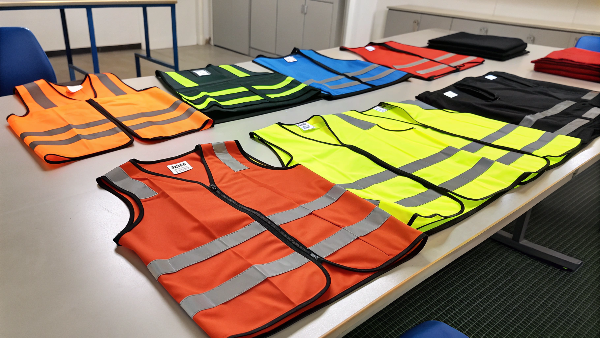
I always advise caution when considering Class 1 apparel. While it meets the minimum standard, it offers the lowest level of visibility. I remember a client, a logistics manager for a small distribution center, who initially wanted Class 1 vests for his forklift operators to cut costs. I explained that even though their vehicle speeds were low, the complex, busy environment with many blind spots created a higher risk than a simple parking lot. We reviewed his facility's layout together. He ultimately decided on Class 27 vests, which provided 360-degree visibility with more fluorescent and reflective material. A few months later, he told me it was the right call after a near-miss was avoided because a driver saw the operator's bright vest from a distance. That is why a proper risk assessment8 is always more important than just meeting the bare minimum requirement.
What is the difference between ANSI 107 2015 and 107-2020?
Keeping up with changing standards can be tough, can't it? You might see different years listed and worry your gear is outdated. This is a key detail for compliance.
The main difference is that the 2020 version of ANSI/ISEA 107 is a reaffirmation of the 2015 standard without technical changes. It simplified things by combining the ANSI 107 (roadway) and ANSI 207 (public safety) standards into one comprehensive document organized by garment "Type."
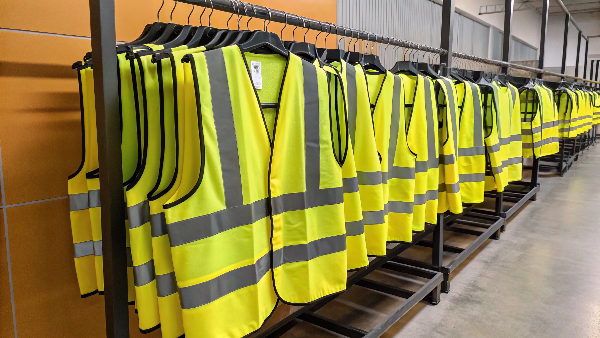
The 2015/2020 update was a significant and positive step for the industry. It made choosing the right gear much more logical. Before, you had to cross-reference two different standards if you were outfitting both roadway crews and first responders. Now, it's all under one umbrella. The key change was the introduction of "Types" to categorize work environments. This works in combination with the Performance "Classes." As a manufacturer, this means we can design and certify garments for very specific roles, ensuring better safety. For our clients, it streamlines the buying process. You just need to identify your team's environment Type and risk level Class.
| Standard Feature | ANSI/ISEA 107-2015 & 107-2020 |
|---|---|
| Consolidated Standard | Merged ANSI 107 and ANSI 207 into a single standard. |
| Garment "Types" | Introduced Type O6 (Off-Road), Type R9 (Roadway), and Type P10 (Public Safety). |
| Classes | Kept Performance Classes 1, 2, and 3. |
| Sizing | Allows for a single size for certain garments to accommodate more users. |
What is ANSI 107 Class 311 standard?
Have you seen "Class 3" on a garment and wondered what makes it the top tier? When your team faces the highest risks, you need the highest level of protection available.
ANSI 107 Class 3 defines the highest level of visibility for workers in high-risk environments. It requires the largest amount of background and retroreflective material to ensure maximum conspicuity, especially against complex backgrounds and at high speeds (over 50 mph / 80 kph).
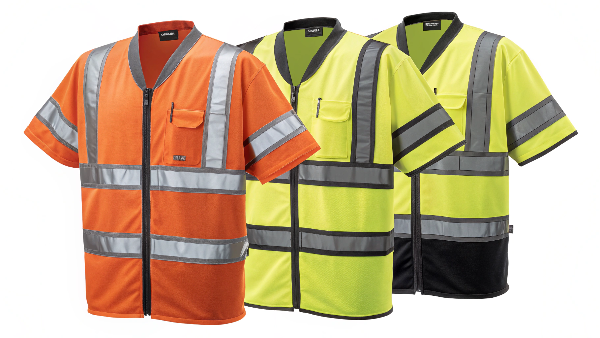
Class 3 is the gold standard for worker visibility. It is designed for road crews on highways, emergency responders, and anyone working in extreme weather conditions where visibility is poor. The key difference is that Class 3 garments must have reflective material on the sleeves and trousers. This provides a full human silhouette, making it much easier for a driver to recognize a person from a distance, day or night. For our clients in construction and infrastructure, Class 3 is non-negotiable. We manufacture Class 3 jackets, coveralls, and even shirts. We use premium 3M Scotchlite reflective tapes and high-luminance fabrics to guarantee that the gear performs flawlessly, even after many washes. When a life is on the line, there is no room for compromise, and Class 3 provides that ultimate peace of mind.
What does ANSI stand for?
You see the letters "ANSI" everywhere on safety equipment, but do you know what they represent? It’s more than just a label; it represents a commitment to safety and quality.
ANSI stands for the American National Standards Institute. It is a private, non-profit organization that oversees the development of voluntary consensus standards for products, services, processes, systems, and personnel in the United States. It does not write the standards itself but accredits other organizations.
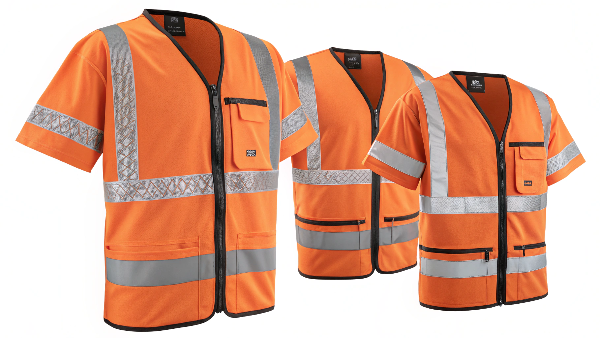
Think of ANSI as the ultimate quality controller for standards. They don't create the rules for high-visibility clothing themselves. Instead, they empower expert groups like ISEA to develop them through a rigorous, transparent, and consensus-based process. This ensures that the standards are fair, effective, and based on real-world data and needs. For us as a manufacturer, having our products certified to an ANSI-accredited standard is a mark of trust. It tells our clients, like Danny Cheng, who relies on our compliance, that our gear has been tested and proven to meet the highest safety benchmarks. It is an assurance that you are not just buying a product, but a certified piece of safety equipment that has passed a credible, nationally recognized process. This is why our ISO and OEKO-TEX certifications are so important to us; they are part of the same commitment to globally recognized standards.
What is the difference between Class 2 and Class 3 shirts?
When buying shirts, is it hard to decide between Class 2 and Class 3? The visual difference might seem small, but the safety implications are significant, especially for roadway workers.
The primary difference is that Class 3 shirts must have sleeves with retroreflective banding, while Class 2 shirts do not. Class 3 also requires a greater total area of both fluorescent background material and reflective tape to provide superior visibility for high-risk environments.
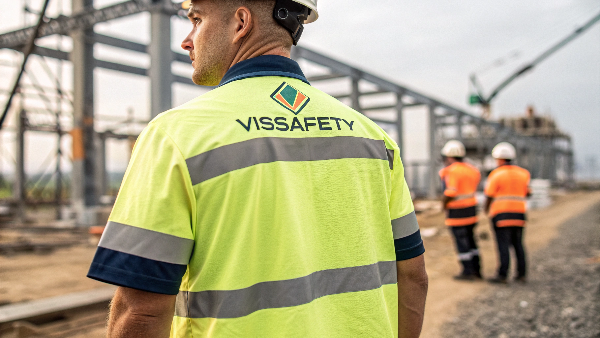
I get this question all the time. A manager will ask, "Why can't my team just wear a Class 2 vest over their regular long-sleeve shirt?" The problem is that this doesn't create the full human outline that a true Class 3 garment does. The sleeves on a Class 3 shirt are critical because they highlight arm movement, making the wearer more recognizable as a person. The standard is very specific about the required material amounts for each class. From our factory floor, this means cutting patterns for Class 3 shirts that are larger and use more fabric and tape. For clients, it's a crucial distinction for compliance, especially for workers exposed to high-speed traffic.
| Feature | Class 2 Shirt | Class 3 Shirt |
|---|---|---|
| Sleeves | Not required; can be sleeveless or short-sleeved. | Required; must be long-sleeved with reflective bands. |
| Fluorescent Area | Minimum 775 in² (0.50 m²) | Minimum 1240 in² (0.80 m²) |
| Reflective Area | Minimum 201 in² (0.13 m²) | Minimum 310 in² (0.20 m²) |
| Typical Use | Roadway work with moderate speeds, airports. | Highway work, emergency services, high-speed zones. |
What does ANSI class mean?
Are you unsure what the "class" number on a safety vest12 tag really signifies? Think of it as a simple rating system. It tells you exactly how visible the garment will make you.
An ANSI "Class" is a performance rating (1, 2, or 3) that indicates the level of visibility a garment provides. The rating is determined by the minimum required amount of fluorescent background material and retroreflective tape2, with Class 3 offering the highest level of visibility.
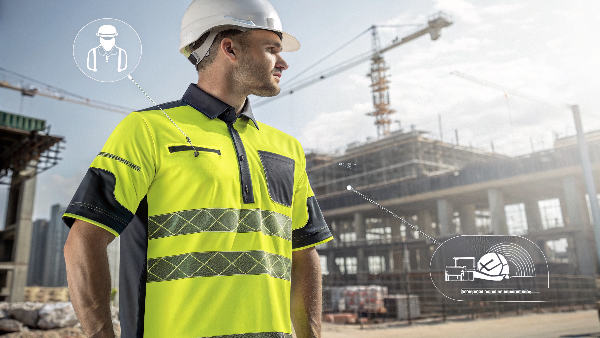
In our business, the class is everything. It is the first thing a safety manager looks for. It is a shorthand way to communicate the garment's protective capability. When we design a new vest or jacket, the target class dictates the entire process. Our designers, like Jacky, use CAD software to lay out the patterns, carefully calculating to ensure every size in the production run meets or exceeds the square-inch requirements for its intended class. Class 1 is for when workers are safely away from traffic. Class 2 is for when they are closer and speeds are moderate. Class 3 is for the most dangerous environments where workers need to be seen from the greatest possible distance. Choosing the right class is the most direct way to match the gear to the hazard level of the job.
What is the difference between ANSI 107 and 207?
Have you ever seen an older vest labeled "ANSI 207" and wondered if it's still compliant? It’s a valid concern, as standards evolve. Staying current is key to worker safety13.
ANSI 207 was a separate standard specifically for public safety personnel like police and firefighters. It has now been incorporated into the ANSI 107 standard as "Type P." Garments now fall under one standard, ANSI/ISEA 107-2020, but are specified as Type O, R, or P.
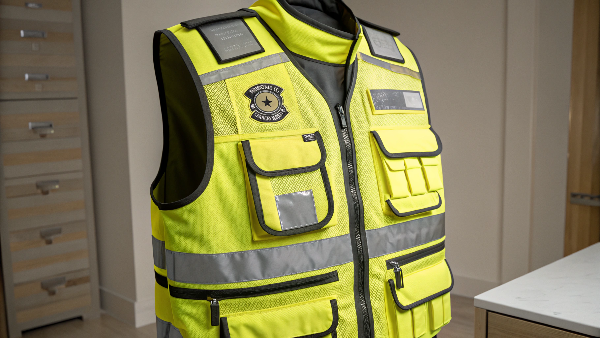
This was a brilliant move to simplify the standards. For years, we had two separate but similar documents, which caused confusion. Public safety professionals needed specific features, like tear-away designs for safety during altercations and easier access to equipment belts. The ANSI 207 standard addressed this. By merging it into ANSI 107 as Type P (for Public Safety), the industry created one unified guide. Now, a fire department can source a Type P, Class 2 or Class 3 vest that meets all their specific needs under the same standard as a roadway construction crew using a Type R vest. For our clients who serve multiple sectors, this consolidation makes ordering much easier. They can trust that any garment we produce labeled "Type P" is built with the unique challenges of first responders in mind.
What is the difference between OSHA and ANSI standards?
Do you get confused between the roles of OSHA and ANSI? It's a common point of confusion. Many people use the terms interchangeably, but they have very different and important roles.
ANSI is a private organization that develops voluntary consensus standards, while OSHA is a government agency that creates and enforces mandatory workplace safety regulations. OSHA often incorporates ANSI standards into its regulations, making them legally enforceable requirements.
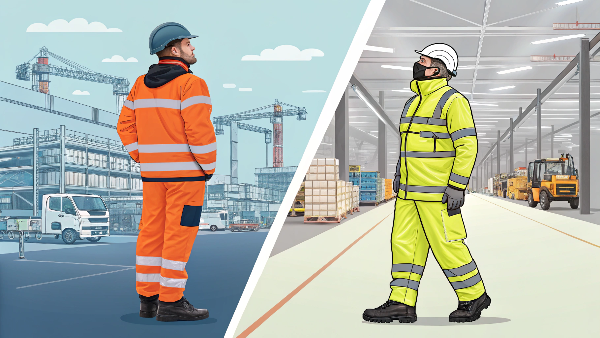
Here is the simplest way I explain it to my clients: ANSI writes the "how-to" guide, and OSHA14 makes it the law. ANSI,
-
Discover the essential features that make safety apparel effective in protecting workers. ↩
-
Discover how retroreflective tape enhances visibility and safety in low-light conditions. ↩ ↩
-
Explore the importance of visibility in safety apparel and its impact on worker safety. ↩
-
Understand the performance classes to choose the right safety apparel for your work environment. ↩
-
Find out when Class 1 safety apparel is appropriate and how it can protect your team. ↩
-
Explore Type O safety apparel designed for off-road environments and its specific uses. ↩ ↩
-
Explore the advantages of Class 2 safety vests for moderate-risk environments. ↩
-
Find resources on conducting effective risk assessments to choose the right safety gear. ↩
-
Learn about Type R safety apparel for roadway work and its essential features. ↩
-
Discover the unique features of Type P safety apparel designed for public safety professionals. ↩
-
Learn why Class 3 safety gear is essential for high-risk environments and how it enhances visibility. ↩
-
Explore this link to find top-rated safety vests that ensure visibility and meet compliance standards. ↩
-
Learn best practices for enhancing worker safety through proper gear and training. ↩
-
Understand the key differences between OSHA and ANSI standards for workplace safety. ↩

